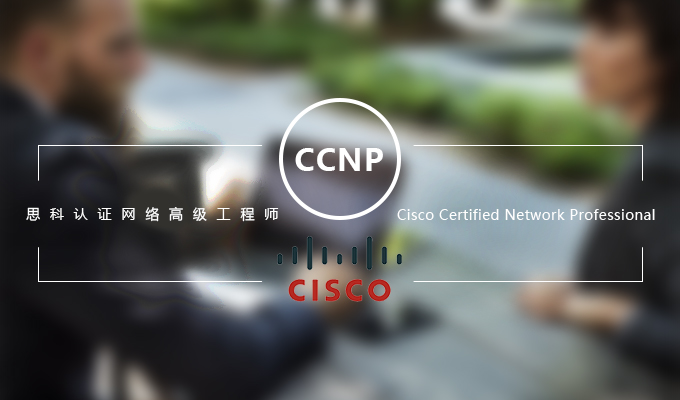 CCNP思科认证网络高级工程师
CCNP思科认证网络高级工程师路由和交换认证帮助甄别网络工程师对本地局域网及广域网的设计,实施,验证,故障排 除及与其他网络专家合作关于先进的网络安全、语音、无线及视频解决方案时必备的能力。对于那些 至少有一年网络工作经验,并准备提升复杂网络解决方案相关技能和独立工作能力的人来说,CCNP路 由和交换认证十分合适。
获得CCNP路由和交换认证的考生,证明了他们具备网络工程师,网络支持工程师,系统工 程师或网络技术员等企业职位所需的技能。此认证中的路由和交换协议知识将为您提供一个持久的适 应于当今物理网络和未来虚拟化网络的知识基础。
考试说明:实施Cisco IP 路由(ROUTE 300-101)是获得思科CCNP和CCDP认证需要通过的一项考试。考试 时间为120分钟,包括50-60道考题。ROUTE 300-101考试证明通过的考生具备网络路由的知识和相关技 能。他们有能力使用先进的IP寻址技术和路由技术实施可扩展的、高安全性的思科路由与局域网,广 域网及IPv6的连接。
本考试还涵盖了为支持企业分支办公网络和移动网络工作环境配置高安全性路由解决方案。
以下是实施Cisco IP 路由(ROUTE 300-101)考试的主要内容和考点。然而,在考试的特定版本中也可 能出现其他相关的考点。为了更好地反映考试内容并明确考试目的,下面的考试大纲可能在不发出通 知的情况下随时调整。
| 章节目录 | 课程目录 | ||
|---|---|---|---|
|
第一章
Network Principles |
|
|
|
|
第二章
Layer 2 Technologies |
|
|
|
|
第三章
Layer 3 Technologies |
|
|
|
|
第四章
VPN Technologies |
|
|
|
|
第五章
Infrastructure Security |
|
|
|
|
第六章
Infrastructure Services |
|
|
|
考试说明:实施Cisco IP交换网络(SWITCH 300-115) 获得思科CCNP和CCDP认证需要通过的一项考试。考 试时间为120分钟,包括45-55道考题。SWITCH 300-115考试证明通过的考生具备网络交换的知识和技 能。他们有能力使用思科企业架构来设计、配置和验证企业网络交换解决方案的实施。 SWITCH考试还涵盖了高度安全集成的VLAN和WLANs技术。 以下是实施Cisco IP交换网络(SWITCH 300-115)考试的的主要内容和考点。然而,在考试的特定版本 中也可能出现其他相关的考点。为了更好地反映考试内容并明确考试目的,下面的考试大纲可能在不 发出通知的情况下随时调整。
| 章节目录 | 课程目录 | ||
|---|---|---|---|
|
第一章
Layer 2 Technologies |
|
|
|
|
第二章
Infrastructure Security |
|
|
|
|
第三章
Infrastructure Services |
|
|
|
考试说明:TSHOOT 300-135考试证明通过的考生具备这些知识和技能:设计和实施适用于复合型企业路 由交换网络的定期维护;使用基于技术性实践和系统性的ITIL兼容方式来进行网络故障排除。
准备参加考试的考生必须注意:虽然此考试的官方先决条件是获得CCNA路由交换认证,您还需要掌握 路由(300-101)和交换(300-115)考试中涵盖的知识和考点以便通过考试。
以下是故障排除并维护Cisco IP网络v2(300-135)考试的的主要内容和考点。然而,在考试的特定版本 中也可能出现其他相关的考点为了更好地反映考试内容并明确考试目的,下面的考试大纲可能在不发 出通知的情况下随时调整。
| 章节目录 | 课程目录 | ||
|---|---|---|---|
|
第一章
Network Principles |
|
|
|
|
第二章
Technologies |
|
|
|
|
第三章
Layer 3 Technologies |
|
|
|
|
第四章
VPN Technologies |
|
|
|
|
第五章
Infrastructure Security |
|
|
|
|
第六章
Infrastructure Services |
|
|
|
 咨询热线
咨询热线 在线报名
在线报名 登记信息后,咨询老师会第一时间与您联系!
登记信息后,咨询老师会第一时间与您联系!